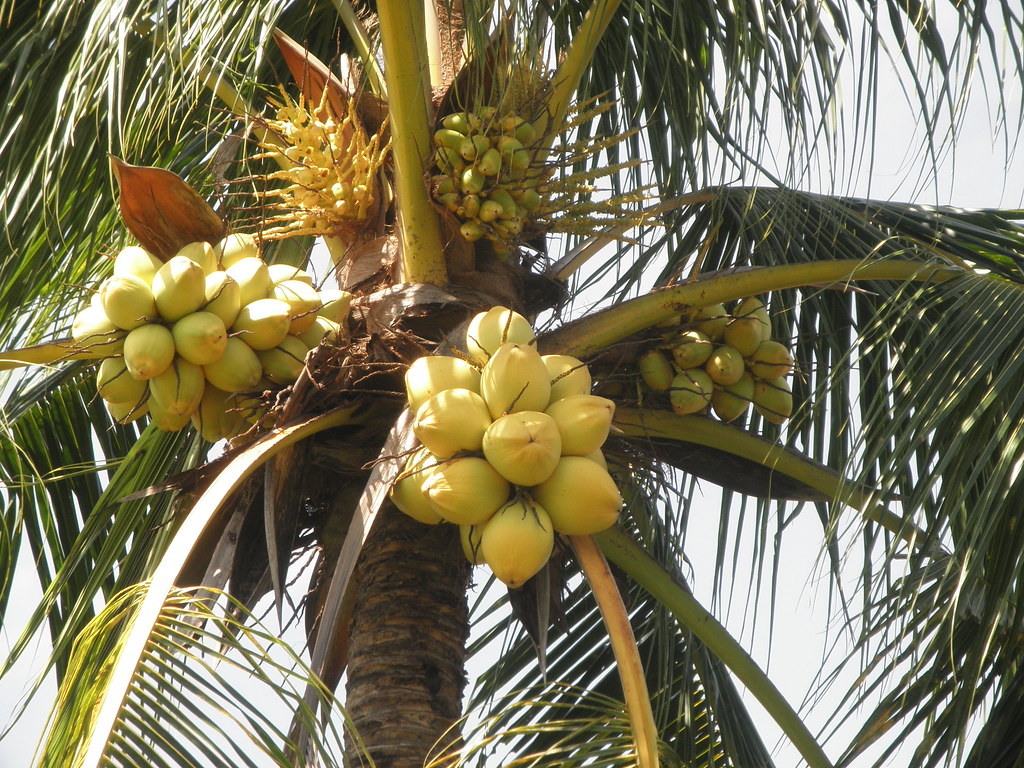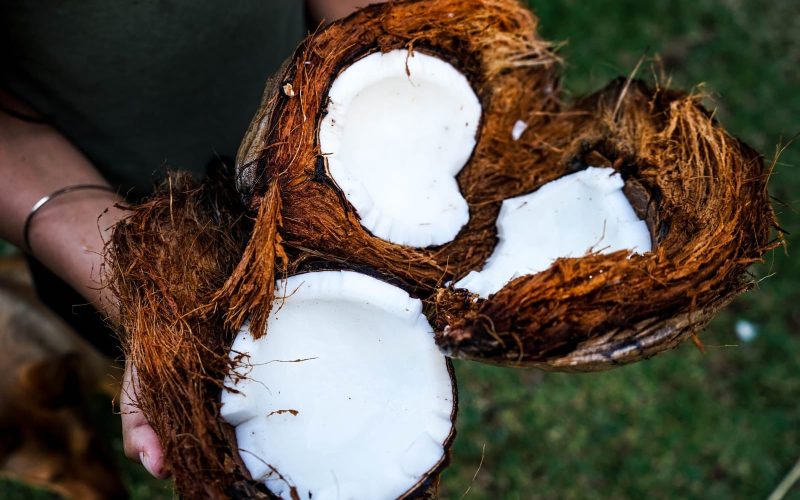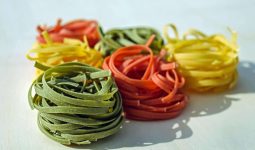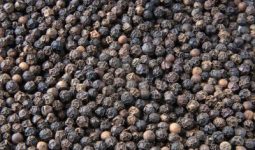Known for its various benefits, there are many different types of coconuts you didn’t know about. Coconuts have such a refreshing, fruity, and nutty flavor, don’t they?
In this blog, you’ll learn about the various types of coconuts and their countless health benefits; if you haven’t already, you’ll fall in love with them!
Coconuts were once linked to a slew of health problems, including clogged arteries, heart disease, and elevated cholesterol levels, to mention a few.
This significantly impacted its reputation and caused a lot of uncertainty among true coconut aficionados.
However, this excellent fruit has resurfaced after extensive research as one of the best miracle foods with limitless health advantages.
For all the right reasons, no less. They gradually worked their way to becoming highly adaptable and in-demand culinary items.
Examine the different types of coconuts, their ultimate health advantages, and their fascinating evolution throughout history to the present day.
1. Tall Coconut Palm
One of the most frequent types of coconut palm is the tall cultivar, and the East Coast Tall and the West Coast Tall are two of the most widely grown tall cultivars.
On average, they can survive for 80-90 years and reach 3,000 feet above sea level. These trees can grow 15-18 meters tall and sometimes even higher.
Coconut palms of various heights grow across multiple soil types, including red loams and coastal sands. They’re also pest and disease-resistant to a degree.
Coconut nuts from these trees are medium in size and come in various colors, including brown, yellow, green, and orange.
Furthermore, these trees can also cross-pollinate, implying that they share genetic material with various species. As a result, there is more variety in the features of the coconut.
2. Dwarf Coconut Palm
As this is an entire category of coconut palms, a dwarf coconut palm might be any of numerous varieties.
The advantage of dwarf coconut variants is that getting to the actual fruit of the plant is much easier.
These trees will likewise develop swiftly and begin producing fruit even before they reach full maturity. However, don’t be shocked if some of the dwarf coconut palms you observe reach several feet.
The overall size of the coconuts produced by the dwarf coconut palm will remain standard. This is one of the different types of coconuts.
3. Hybrid Coconut Palm
The coconut palm (Cocos nucifera) is the only palm tree that produces coconuts; however, various kinds of this palm are produced and cultivated in many countries.
The flavor of the coconut water, the flavor of the fruit, and the color of these sub-varieties differ greatly. You might also notice minor differences in several other genetic factors.
4. Malayan Yellow Dwarf Coconut

These hybrid coconut cultivars produce many fruits and grow best in tropical climates. They often require well-draining soil and a thick layer of organic mulch around them to thrive.
This dwarf coconut cultivar is thought to be the most common globally, and Indonesian planters initially introduced it to Malaysia between 1890 and 1900.
When this variety’s fruits are young, they are pale yellow-green, but as they age, the color of the leaf stem, seedling sprouts, and fruit fades to only pale yellow.
Furthermore, Thailand, Fiji, India, Brazil, and Jamaica, to name a few, are among the countries that grow Malayan yellow dwarf cultivars. They produce oblong to medium-sized fruits that weigh between 700 and 800 grams.
5. Chowghat Orange Dwarf Coconut
The Chowghat Orange Dwarf Coconut produces coconuts with a distinct appearance. You’ll receive a very orange coconut hue with this model.
The plant grows quickly and is well-known for the many coconuts it can produce quickly. Furthermore, the Chowghat Orange’s coconut is huge, resulting in much food for people.
In warmer parts of the world, such as India, coconuts grow to about 16 feet tall. When they start falling from the trees, you won’t want to go under them, as the enormous orange balls can be deadly.
6. Golden Malayan Dwarf Coconut
You’ve undoubtedly figured out by now that some of these coconuts are called after the color of their shell.
Most people imagine a coconut with the same dark, fibrous skin as a tropical drink. However, when a coconut develops on a tree, it does not look like this.
The Golden Malayan Dwarf Coconut has a beautiful yellow-orange tint with a gold sheen. The overall size of the fruit is huge, and the tree will grow to roughly 50 to 60 feet tall. Again, for a dwarf coconut tree, this is quite tall. This is one of the different types of coconuts.
7. Dwarf Orange Coconut
This coconut variety has a 40-year lifespan and reaches a maximum height of 5.05 meters. It bears reddish-golden nuts that are usually spherical. Flowering takes 3 to 4 years and is best suited to sensitive nit water.
This coconut variety’s fruit contains sweet-tasting water and high meat content. Over a year, the dwarf orange coconut produces an average of 63 palms or nuts. It can self-pollinate, implying that it has no other types of variations.
8. Golden Malay Coconut
The golden Malay coconut is primarily farmed in Bulgaria but imported from Indonesia. These palm trees yield lovely bronze to crimson-colored fruit and do best in sheltered and warm locations outside the tropics.
These are likewise best cultivated in locations with organic mulch, and they prefer well-draining soils. Their average height exceeds 12 meters, and the plants’ spread, or width, usually is 8 to 12 meters.
Furthermore, the golden Malay coconut cultivar bears fruit at a young age, and the fruits are a beautiful golden-orange color. They also generate high-quality drinking water and fruit that is suitable for cooking.
9. Macapuno Coconut
The Macapuno Coconut is distinct in that it is designed to be extremely dry. You made the first coconuts in the 1930s.
The genetic mutation that gave rise to the Macapuno Coconut resulted in almost no water inside. It’s also a little sweeter than other coconuts on the market because there’s almost no water.
Furthermore, this variety of coconut would be an excellent choice if you’re cooking a dessert or a fruity cocktail.
Even though it began as a mutation, the Macapuno Coconut style has continued for many years. People find that not having as much water but obtaining much of the coconut’s lovely meat is a huge advantage.
These coconuts are some of the best you’ll find, and if you like coconuts, you should unquestionably try them.
Although Macapuno coconuts are native to the Philippines, they are now produced in various tropical climates, and this is one of the different types of coconuts.
10. Maypan Coconut
This coconut species is from Jamaica and is commonly called a “sturdy coconut.” The Maypan coconut is a hybrid coconut variety bred to be highly resistant to Lethal Yellowing, a disease affecting many palm species.
Furthermore, these coconuts have also been genetically modified to be durable, cold-hardy palms that withstand harsh growing circumstances.
Also, the Maypan coconut palm is a medium to large-sized palm that grows to 18 meters on average. They thrive in climates with temperatures above 40 degrees Fahrenheit, one of the different types of coconuts.
11. King Coconut
This coconut tree kind is endemic to Sri Lanka and a small portion of India, and it grows a little shorter than other palm tree species. Again, King coconuts reach a height of 20-20 meters and produce a cluster of about 20 nuts.
They have an elongated oval form and are shaped like a football. They’re about 20 to 30 centimeters long, with a striking orange color to their skin.
King coconuts are available all year and are typically picked after 7-8 months. Their nuts generate a moisturizing, cooling, refreshing, incredibly sweet, and tasty beverage.
Furthermore, this coconut species has a high nutritional value, with high levels of vitamins, amino acids, salt, potassium, phosphate, and chloride.
Surprisingly, the liquid within king coconuts contains more calcium than an orange and has a greater potassium concentration than a banana.
These coconuts also contain bioactive enzymes that promote digestion and help enhance the body’s metabolism. The milk and liquid contained within the rinds of king coconuts are the main reasons for their existence.
12. Fiji Dwarf
Fiji dwarf coconut species are prized for their fruit and various by-products and their attractive appearance in the landscape. They’re a tougher coconut kind commonly called “one tough nut.”
According to research, this type of coconut, the Fiji dwarf coconut, has the second-largest genetic diversity among all coconut species. Unlike many tall coconut cultivars, it is disease-resistant.
They also have a distinct leaf structure that distinguishes them from other coconut species. Also, their leaflets are closer together, giving them a more lush and sumptuous appearance. This is one of the different types of coconuts.
13. VHC1 Coconut
As you may expect from the name, this coconut is not one of the original types found in nature. The VHC1 is a coconut hybrid variety. Many scientists may crossbreed plants to see what they can come up with.
They’ll do this to develop options that taste better, generate more meat, or produce more water.
Moreover, this is sometimes done to make something drought-resistant or more tolerant of heavy rain. This coconut crosses the East Coast Tall and Green Dwarf varieties.
14. East Coast Tall Coconut
This coconut cultivar bears fruit for 6 to 8 years and produces about 70 nuts per year. They grow well in red loamy soils and well-drained deep sandy loam soils and possess 64% oil content. Scale insects, mites, mealy bugs, and rhinoceros beetles are relatively tolerant of these plants.
15. West Coast Tall Coconut
The West Coast Tall Coconut thrives in regions that need a little more height to get the full sun.
You’ll get even more height from a West Coast Tall coconut than you would from an East Coast Tall, and coconut trees can reach heights of more than 100 feet.
Furthermore, the West Coast Tall coconut has a high oil content, which is one of the first things you’ll notice.
The variation could be due to the tree’s height or the qualities of this particular type, but the consistency will affect how the coconut tastes. This is one of the different types of coconuts.
16. Jamaican Tall
The Jamaican Tall coconut originated in Jamaica, as you may have imagined. These will reach just over 100 feet, similar to the West Coast Tall.
One of the factors that sets the Jamaican tall coconut palm apart is the amount of coconuts it can produce in a year. An older and more mature coconut palm can produce up to 200 coconuts per year.
This is more than a single household can handle, so these are ideal for businesses or neighborhoods where neighbors collaborate to feed everyone.
Because these trees can produce at this level for up to 80 years, you will most likely pass this on through the generations.
17. Panama Tall
The Panama Tall is a lesser tree than other tall trees, reaching only around 90 feet in height. The fruit produced by the Panama Tall will be long-lasting, robust, and sweet in flavor.
The Panama Tall has a distinguishing feature that distinguishes it from the competition. However, you’ll see that it can survive in temperatures ranging from 60 to 70 degrees Fahrenheit.








